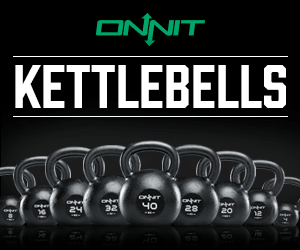[ad_1]
But if your medical professional has actually never ever informed you to see your salt consumption, you do not have a history of hypertension or other health problems, and you work out often, it may be time to include more salt to your diet plan.
You do not wish to overdo it. But you may be doing yourself a favor by including more salt to your meals and by having the periodic salted reward. Here’s why.
1. Sodium Increases Blood Volume
By making salt a part of your pre-workout meal or drinking a pre-workout supplement which contains salt, you can assist your body develop the additional increase in blood volume you require to complete your exercise strong.
Blood volume is made up of red cell and blood plasma, both of which aid move amino acids, glucose, hormonal agents, and other nutrients throughout your body. By increasing your blood volume, salt assists speed the shipment of these nutrients to your working muscles.
A research study performed at the University of Otago, New Zealand discovered that professional athletes who consumed a high-sodium drink prior to running had the ability to run longer than those who consumed a low-sodium drink.[2]They kept fluids much better too, which decreased the physiological stress on their bodies and kept their core body temperature level lower.
2. Sodium Increases Nutrient Delivery
Your body requires glucose, fats, amino acids, water, and electrolytes to make the most of workout efficiency. But for these nutrients to work, they need to have the ability to enter your muscle cells. Sodium to the rescue once again, serving as a “co-transporter” to assist nutrients travel through cell walls.
3. Sodium Stimulates Thirst
Simply by making you thirsty, salt triggers you to take in more fluids, which has great deals of exercise-related advantages. First, staying hydrated assists your kidneys keep appropriate electrolyte levels. Hydration likewise assists keep blood volume while you work out. And it minimizes the opportunities that you’ll lose strength, power, or endurance— or struggle with the tiredness, headaches, lightheadedness, and muscle cramps triggered by dehydration.

HowMuch Sodium Is Enough?
For hardcore nutrient-counters out there, the 2015-2020Dietary Guidelines for Americans recommends that a healthy diet plan needs to consist of less than 2,300 milligrams of salt each day.
Sometimes, nevertheless, it’s tough to compute just how much salt your diet plan includes. Make sure to consist of the salt you obtain from salted foods such as canned beans and veggies, soup, pretzels, popcorn, chips, and whole-grain crackers. Otherwise, you’ll most likely ignore your overall.
One of the very best methods to see if you’re getting sufficient salt is by taking a look at the color of your urine If there’s no color in your urine and it appears like water, you’re most likely consuming excessive water and require to get more salt in your diet plan. If your urine is dark like apple cider, it indicates you’re dehydrated and require to begin consuming more fluids. The color you desire is a pale or lemonade shade of yellow, which indicates you’re well-hydrated and getting sufficient salt.
Clear urine might be an indication you’re struggling with hyponatremia. Hyponatremia takes place when the salt levels in your body are too low, due to the fact that you either have a pre-existing medical condition or have not been consuming sufficient fluids which contain salt and other electrolytes like potassium
Symptoms of hyponatremia can consist of queasiness, headaches, tiredness, and muscle cramps, and in extreme cases can cause seizures and coma.
References
- AmericanHeartAssociation (2016). Sodium and YourHealth Retrieved from https://sodiumbreakup.heart.org/sodium and your_health
- Sims,Stacy., Vliet, Linda., Cotter, James., Rehrer, Nancy, (2007). Sodium Loading Aids Fluid Balance and Reduces Physiological Strain of Trained Men Exercising in theHeat OfficialJournal of the American College of Sports Medicine.123-130
[ad_2]



